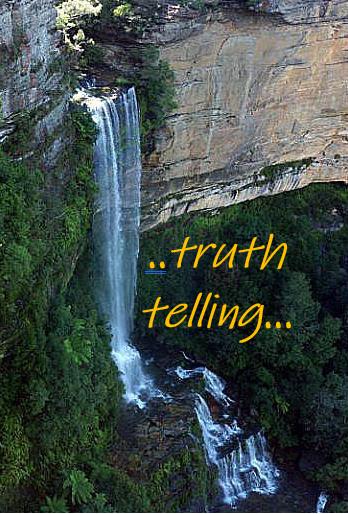Archive for the ‘Habitat Threats’ Category
Sunday, January 15th, 2012
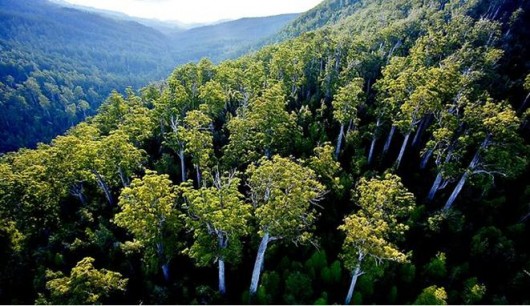 Tasmania’s magnificent ‘Weld Forest’
~ one of Tasmania’s rare ancient forests constantly threatened
by Tasmanian Government recidivist logger ‘Forestry Tasmania’ Tasmania’s magnificent ‘Weld Forest’
~ one of Tasmania’s rare ancient forests constantly threatened
by Tasmanian Government recidivist logger ‘Forestry Tasmania’
.
Australia’s Gillard Labor Government yesterday (20120114) announced an ‘interim legal protection for 428,000 ha’ ahead of tomorrow’s scheduled return of recidivist logging.
This appears good news which obviously the Gillard media release intends. But the process is duplicitous and sly.
Tasmania’s 2011 Forests Agreement is a community agreement about public forest protection involving taxpayer funded Forestry Tasmania so what moral right does the Labor Party have to deny the process being public – i.e. transparent and open? Why is the forest map not publicly online showing the updates of the discussions? Which 1950ha get the chainsaw and why?
This is the only available map. [Read Tasmanian Forest Protection Map 2011]
Professor Jonathan West, Chair of the Independent Verification Group has a lot to answer for. Why has he not voiced outrage publicly of Forestry Tasmania’s illegal logging of the 430.000 hectares of native forests protected in Interim Reserves under the Agreement?
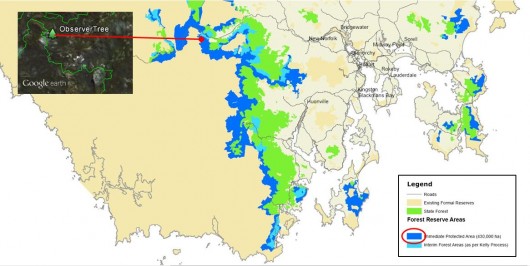
Relative position of the local Tasmanian community protest tree sit The Observer Tree
For ongoing updates visit The ObserverTree.org
.
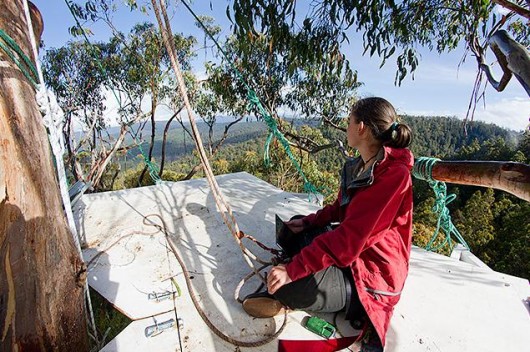 Tasmania’s Forest Defender – Miranda Gibson
stationed in a eco-Tree Sit 60 metres above the Styx Valley Forest floor
Visit: The ObserverTree.org
…waiting for Australia’s Prime Minister Julia Gillard to honour her personal promise to Tasmanians to protect Tasmanian old growth forests for perpetuity.
. Tasmania’s Forest Defender – Miranda Gibson
stationed in a eco-Tree Sit 60 metres above the Styx Valley Forest floor
Visit: The ObserverTree.org
…waiting for Australia’s Prime Minister Julia Gillard to honour her personal promise to Tasmanians to protect Tasmanian old growth forests for perpetuity.
.
572,000 hectares of Tasmania’s remaining old growth
…’as agreed‘ Julia!
.
‘Tassie forests deal like a Gunn to the head’
[Source: ‘Tassie forests deal like a Gunn to the head’, by political journalist Bruce Montgomery in Hobart, ^http://www.crikey.com.au/2011/09/06/tasmanian-forrests-deal-gillard-and-giddings/]above the Styx
.
‘The $276 million agreement that Prime Minister Julia Gillard and Tasmanian Premier Lara Giddings flaunted only a month ago as the ultimate peace deal to end the 40-year war in Tasmania’s forests is dead in the water. It comes as no surprise to those who have sought to interpret the poorly drafted provisions of the intergovernmental agreement (IGA) signed by Gillard and Giddings and those of the agreement that preceded it, the so-called Statement of Principles.
The Statement of Principles was the product of those purporting to represent the Tasmanian forest industry and the conservation movement to achieve a peace, most recently under the guidance of former ACTU secretary Bill Kelty.
Both documents appear to have been the work of plant operators rather than draftspeople. Grammar and proofing blunders aside, the giant flaw in both agreements has been the right of conservation groups to identify and nominate another half a million hectares of Crown land in Tasmania to be annexed into reserves, perhaps to the status of national parks or World Heritage, in order to neuter, by law, the timber industry in Tasmania and to pay alms to its victims.
Private foresters, who manage 26% of the total forest cover, were excluded from the negotiations on the pretext that the talks did not involve forests on private land, yet clause 31 of the IGA specifically drags 885,000 hectares of private forests into the equation.
Such a deal, whether concluded at NGO or government level, was never going to pass Tasmania’s Upper House, the Legislative Council. If it did come to pass, it would seal the fate of the Labor-Green governments in Canberra and Hobart as far as Tasmanian voters were concerned.
The premise for the Statement of Principles and the IGA was that the major industrial player, Gunns, was getting out of native forest logging in favour of plantations in order to swing public and banker support behind its $2.5 billion pulp mill proposal at Long Reach on the Tamar River.
In effect, Gunns was about to place all its eggs in one basket, a world-scale pulp mill using only plantation timber. Both agreements hinged on Gunns getting government compensation for its departure from public native forests, yet the mood in Tasmania has clearly been that Gunns should get nothing; its exit from native forests was being made on purely commercial grounds; it was immaterial that it had residual rights to use the public native forests.
If the Giddings government had been responsible for giving Gunns one red cent from the overall $276 million compensation package for the IGA, it would have faced political and electoral oblivion.
We don’t know what Gunns was offered in the end. It is thought to have been $23 million, but on the proviso that it pay its debts to Forestry Tasmania, a disputed $25 million.
Yesterday the Tasmanian government confirmed Gunns had rejected the offer, though Gunns, which has been in a trading halt on the stock exchange since August 8, said nothing.
Assuming that is right, it has the option to place those forest rights on the market. Since the IGA depends on those forests being protected, the keystone to the agreement is gone.’
.
‘Tasmanian forest deal riles green groups‘
[Source: ‘Tasmanian forest deal riles green groups’, by Lanai Vasek and Matthew Denholm, ‘The Australian’, 20120113, The Australian: ^http://www.theaustralian.com.au/national-affairs/tasmanian-forest-deal-riles-green-groups/story-fn59niix-1226243780040]
.
The Gillard Labor Government has announced interim legal protection for 428,000 ha of Tasmania’s forests, but has been accused of reneging on a deal to deliver a larger logging ban.
 Australia’s 27th Prime Minister, The Hon. Julia Gillard (June 2010 – ?)
In her vital and privileged position, she has the power, influence, connections and taxpayer resources
to protect Tasmania’s 572,000 hectares of old growth native forests consistent with the IGA.
As usual, it comes down to political will, courage and innovative thinking – which is what we expect of our leaders. Australia’s 27th Prime Minister, The Hon. Julia Gillard (June 2010 – ?)
In her vital and privileged position, she has the power, influence, connections and taxpayer resources
to protect Tasmania’s 572,000 hectares of old growth native forests consistent with the IGA.
As usual, it comes down to political will, courage and innovative thinking – which is what we expect of our leaders.
.
Environment Minister Tony Burke announced the move today after the Greens suspended normal relations with the government in protest at continues logging of areas deemed sensitive.
The new Conservation Agreement with the Tasmanian Government falls 1950ha short of the forest protection promised under last year’s intergovernmental agreement (IGA) between the Gillard and Giddings governments.
This provoked an angry reaction from environment groups, who said it had “shaken” their confidence in the two governments’ ability to deliver a broader agreement to protect up to 572,000ha.
And Greens leader Bob Brown said it was “a blueprint for the destruction of more than 20 square kilometres of high-conservation value forests”.
…The agreement provides legal protection to the area until an independent process decides how much of the larger area of 572,000ha deserves protection and can be locked up without harming existing timber contracts.
Mr Burke said the new interim deal was good for both forest conservation and jobs and would allow all parties to focus on supporting the longer-term independent verification process, expected to complete by June.
“With this agreement in place, all parties can now concentrate their efforts on assisting the important work of the Independent Verification Group, which is assessing the conservation values of the entire 572,000ha nominated by environmental non-governmental organisations, in addition to verifying long-term timber supply requirements,” Mr Burke said.
“This is a good result for Tasmania’s forestry industry, for local jobs and communities while protecting Tasmania’s iconic forests.”
However, the Wilderness Society, the Australian Conservation Foundation and Environment Tasmania all condemned the two governments for allowing logging in the 1950 ha, saying this included iconic, ancient forests in the Styx Valley, Weld Valley and The Tarkine, including endangered species habitat.
Earlier this week Greens leader Bob Brown said he would not resume his regular meetings with Julia Gillard once parliament returns next month unless she committed to ending logging. This afternoon, Senator Brown said he remained open to ad-hoc talks with Ms Gillard, who will visit Tasmania on the weekend, but accused her of reneging on the promise to protect the full 430,000ha in the IGA announced in August last year.
.
How is Tasmania’s Premier Lara Giddings dealing with the colonial cultural right to log Tasmania’s remaining ancient forests?
Only when Tasmania’s condemned old growth forest is ultimately logged, will neanderthal loggers ugg…
.
‘Where’s me big trees gone’ ?
 . .
Bill Kelty’s drafting of the IGA was a contradictory hoodwink
.
While the public message is $276 million (no less) to exit native forests and a logging moratorium, what is Lara Giddings saying privately to Forestry that we see its business as usual pursuing old growth logging self-righteously on its perceived right to log?
Under the conservation agreement, the Tasmanian government agency Forestry Tasmania is restrained from logging swathes of disputed public forest while the deal is settled. However, evidence has been found of Forestry Tasmania continuing to penetrate its logging deep into these wilderness forests. Meanwhile the contradictory message by the Giddings Labor Government to the Tasmanian forest industry is that it has a ‘guaranteed wood supply‘.
Perhaps having the $276 million cake she says its ok to log the forest too!
In 2004 the Timber Workers for Forests (TWFF) defended their “statutory requirement that a minimum of 300,000 m3 of high quality Eucalypt veneer and sawlog be made available annually.” It’s ‘Logging Statutory Requirement‘ versus ‘Native Logging Moratorium‘ allowing a duplicitous and sly parallel government message process.
Bill Kelty’s drafting of the IGA was worse that a compromise. Its complex and contradictory legalese was a hookwink. Kelty’s wording allowed Forestry to have its cake and eat it. On the one hand it promises Conservation (lumped as “ENGO’s”) under Clauses 25, 26 and 27 …”The State will immediately place the 430,000 ha of native forest…into Informal Reserves.”
While at the same time it also guarantees Forestry wood supply for the remaining industry under Clause 17…”At least 155 000 thousand cubic metres per year of high quality sawlog, by regulation, 265 000 metres per year of peeler billets, a speciality timber supply, noting that the industry claim is 12,500 cubic metres per year, subject to verification.”
So Forestry has has a window of logging opportunity to go for it while Professor Jonathan West’s Independent Verification Group decides the exact boundaries of the 430,000 and 572,000 for either protection or the chainsaw (Clause 20). That decision was due 31st Dec 2011, two weeks ago.
.
“It is little wonder that many Tasmanians now worry that the woodchippers’ greed destroys not only their natural heritage, but distorts their parliament, deforms their polity and poisons their society. And perhaps it is for that reason that the battle for forests in Tasmania is as much about free speech and democracy – about a people’s right to exercise some control over their destiny, about their desire to have a better, freer society – as it is about wild lands.”
[Source: ‘Out of Control: The tragedy of Tasmania’s forests’, by Richard Flanagan, in The Monthly, May 2007, ^http://www.themonthly.com.au/monthly-essays-richard-flanagan-out-control-tragedy-tasmania-s-forests-512]
.
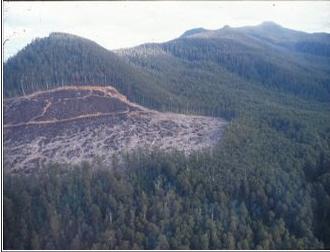 Logging invades Tasmania’s South-West wilderness in the Huon valley,
not far downstream of the above photo.
This logging is ruining the integrity of the adjacent Tasmanian Wilderness World Heritage Area
whose boundaries have been drawn to protect the treeless mountaintops
and leave the forested valleys to the loggers. Logging invades Tasmania’s South-West wilderness in the Huon valley,
not far downstream of the above photo.
This logging is ruining the integrity of the adjacent Tasmanian Wilderness World Heritage Area
whose boundaries have been drawn to protect the treeless mountaintops
and leave the forested valleys to the loggers.
.
Tags: Bill Kelty, Forestry Tasmania, Gillard Labor Government, Independent Verification Group, Julia Gillard, Labor Party, Lara Giggings, old growth forest, recidivist logging, Tasmania, Tasmanian Forests Intergovernmental Agreement, Weld Forest
Posted in + Wild Tasmania, Tasmania (AU), Threats from Deforestation | No Comments »
Add this post to Del.icio.us - Digg
Saturday, January 14th, 2012
 A ‘paddock tree’ in Australia – valued by farmers for their livestock shade
A ‘paddock tree’ in Australia – valued by farmers for their livestock shade
Also a desperate refuge for remnant wildlife, long denied their entire friggin forest!
.
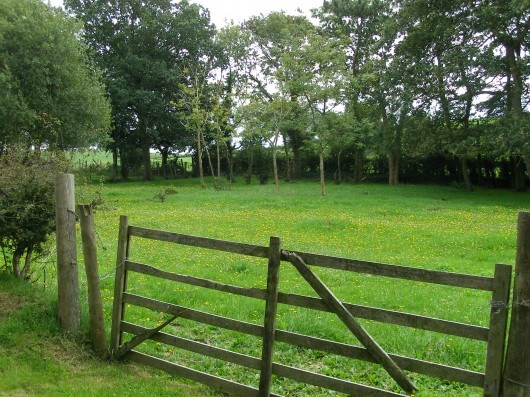 A 19th Century farm meadow in Northern Ireland
Ulster American Folk Park, Castletown, Northern Ireland
(Photo by Editor 20060904, free in public domain, click photo to enlarge) A 19th Century farm meadow in Northern Ireland
Ulster American Folk Park, Castletown, Northern Ireland
(Photo by Editor 20060904, free in public domain, click photo to enlarge)
.
In a native forest, old trees naturally die and saplings germinate from the seed of their parent trees. Native forests are living regenerating ecosystems.
But when humans destroy and disturb forest ecology, the forests change. When humans destroy complete forests and leave a few token shade-providing ‘paddock trees‘ in deforested paddocks, and livestock fertilize the thin fragile soils, humans completely deny forest ecological succession. Isolated trees are isolated trees, so they die. Dieback is one such outcome – suitably named; that is ‘Deforestation Dieback‘ as distinct from the disease ‘Phytophthora dieback‘.
And now some are crying foul out over losing these token ‘paddock trees‘, despite the loss of the entire original forest not getting a mention. This is such anthropocentric bias. The 19th Century William Wordsworth/John Constable pastoral romanticism of what the English countryside ought to look like became the colonial vision for Australia from 1788. It is this inherited notion of a ‘Colonial Bucolic Vista‘ and disturbingly it’s legacy still pervades Australian agricultural culture.
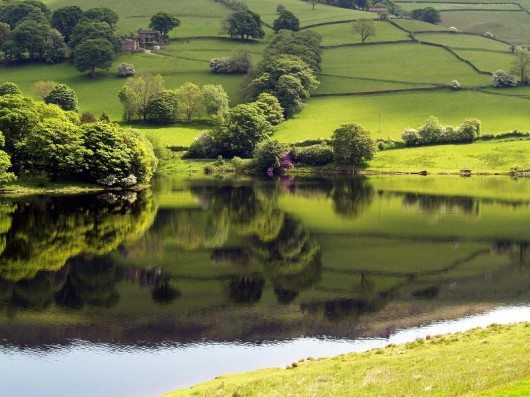 A classic vision of the bucolic English countryside
– where centuries of native heritage, agrarian culture and constant rainfall…permit. A classic vision of the bucolic English countryside
– where centuries of native heritage, agrarian culture and constant rainfall…permit.
.
‘Reversing a tree regeneration crisis’ (Dr Joern Fischer)
.
[Source: ‘Reversing a tree regeneration crisis’, by Dr Joern Fischer, Fenner School of the Environment and Society, ANU College of Medicine Biology and Environment, Summer 2009, Australian National University, ^http://news.anu.edu.au/?p=1725]
.
According to Australian National University (ANU) research published in the US-based ‘Proceedings of the National Academy of Sciences (2009):
.
‘Australia’s south-east temperate grazing region could be virtually treeless within decades.‘
.
‘The research team concluded that most of the trees scattered across millions of hectares of temperate grazing land in New South Wales and Victoria re old and close to death. Existing land management practices (Ed: aka broadscale deforestation) have prevented regeneration of young trees to replace them. The study pointed out that disappearance of ‘paddock trees’ would lead to loss of shelter for livestock, loss of habitat for birds and other wildlife, decreasing water infiltration and other detrimental flow-on effects over the entire ecosystem.
.
(Ed: Is there any trace of a native forest ecosystem on rural farm holdings? These shade tree deprived farmers didn’t complain when they were massacring Australian native forests. A treeless wasteland is the consequence of deforestation, you fools!)
.
Dr Joern Fischer from the Fenner School of the Environment and Society says:
“Under existing management practices, millions of hectares of grazing country, currently supporting tens of millions of trees, will be treeless within decades from now,” “And the loss of this tree cover is predicted to lead to massive declines in biodiversity and grazing productivity.” Dr Fischer’s Sustainable Farms research group has spent the last couple of years documenting the extent of the tree regeneration failure and has been investigating if the situation can be reversed by changing land management.
“Although clearing has largely stopped, tree cover continues to decline because many existing trees are dying of old age, and few young trees are regenerating,” says Fischer. “We studied a 1,000,000 hectare area in the Upper Lachlan catchment of New South Wales. Typical paddock trees are often over 140 years old, and in many locations, no young trees have regenerated for decades.”
ANU’s Dr Joern Fischer’s research found that ‘(native) trees are more likely to regenerate in unfertilised pastures under high -intensity rotational grazing than under conventional, continuous grazing. Fischer states that the study found that maintaining tree cover over vast areas cannot be done without Nature’s help – that is to say via natural regeneration. Therefore, farm ecosystems must become self-sustaining, allowing for natural tree regeneration while also providing an income to farmers.
.
(Editor: What brilliant insight! I hope the taxpayer didn’t fund such lay findings).
.
According to Tim Wetherill, ‘paddock trees‘ provide shelter for livestock, homes for native animals, barriers against soil erosion and a host of other benefits. They’re an icon of the Australian countryside’.
[Source: ‘Reversing a tree regeneration crisis’, by Tim Wetherill, ANU News, Summer 2009, ^http://news.anu.edu.au/?p=1725]
.
(Editor: “An icon of the Australian countryside” What colonial Pastoral Romanticism! What about the more important values of intact native forests before the farmers clearfelled them, burnt the remains and dragged the topsoil under plough?
.
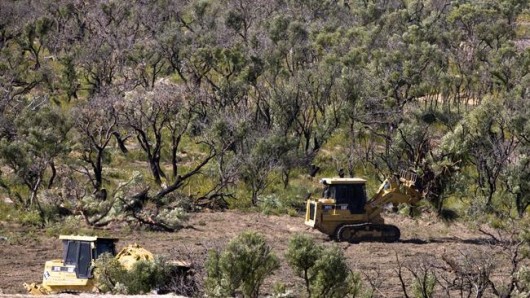 The decidedly browner, drier reality of Australia’s fragile disappearing native vegetation
Nature on the run: Hundreds of hectares of native animal habitat is bulldozed for a new housing development in Perth’s outer suburbs this year.
(Source: Perth Now, Photo by World Wildlife Fund, Australia 2009) The decidedly browner, drier reality of Australia’s fragile disappearing native vegetation
Nature on the run: Hundreds of hectares of native animal habitat is bulldozed for a new housing development in Perth’s outer suburbs this year.
(Source: Perth Now, Photo by World Wildlife Fund, Australia 2009)
.
Fischer’s report continues…
.
‘It’s long been known that paddock trees in much of Australia’s temperate grazing region are not regenerating. With every year we lose a few more as the old trees die but nothing is coming through to replace them. In recent years there’s been a growing realisation that the situation is rapidly evolving into a crisis.
“Our study identified a short list of management options for maintaining paddock trees,” says Fischer. “In some areas, natural regeneration is unlikely in the short term, for example because there are few parent trees, or because soil nutrient levels are high. In such areas, scattered trees can be planted with re-usable tree guards that protect individual trees from livestock – some pioneering farmers are doing this already. Another option is to temporarily exclude livestock from a paddock prior to re-seeding it and resting it for several years – an approach successfully used by Greening Australia in the Canberra region.”
“Our findings suggest that self-perpetuating farm ecosystems with farms trees can be created by applying high intensity rotational grazing with long rest periods, and by phasing out fertiliser use,” explains Fischer. “Even where these practices are adopted, changes in tree regeneration will not occur overnight. But unless significant changes in management are introduced now, old trees will continue to disappear, and opportunities for natural regeneration will continue to be lost.
“The future of Australia’s paddock trees depends on urgent and widespread management action. While mature trees still exist, they provide regeneration nuclei throughout the landscape, thereby offering a window of opportunity to reverse the tree regeneration crisis.”
.
Editor: Fischer’s quest to save ‘paddock trees’ is ecologically ‘penny wise, pound foolish’.
If Fischer’s aim is to have paddock trees regenerate so that farmers’ livestock may continue to have shade from the sun, then farmers can jolly well plant out their own shade trees – simple problem solved cheaply. Farmers could even propagate their own.
If Fischer’s aim is to maintain the 19th Century notion of the colonial bucolic vista, then he is disingenuous about forest ecosystem regeneration and ought to transfer from Science to Arts and study English Romanticism .
If Fischer’s aim is science-based forest ecosystem regeneration, then he should revisit the ANU Library and grab some appropriate books on forest ecosystem regeneration and realise that it is a tad more than about saving ‘paddock trees’).
.
Behold the Colonial Bucolic Vista! …derived from 18th and 19th Century Pastoral Romanticism…achieved by clearfelling, ploughing, fertilising, grazing and leaving a few token ‘paddock trees’.
.
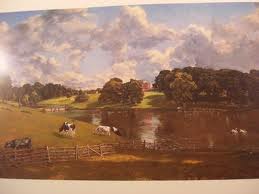 ‘Wivenhoe Park, Essex’
by 19th Century English Romantic painter John Constable ‘Wivenhoe Park, Essex’
by 19th Century English Romantic painter John Constable
.
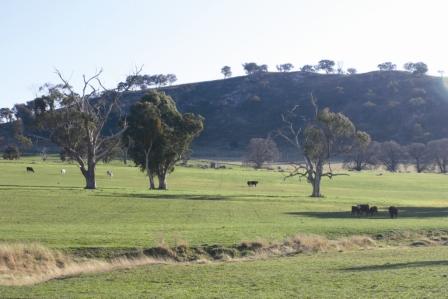 The colonial conversion of Australia The colonial conversion of Australia
.
‘Older paddock trees are dying at a rapid rate’ (M. Sheahan)
.
[Source: ‘Isolated Trees’, by M. Sheahan, Murray Catchment Management Committee/Department of Land & Water Conservation, Border Rivers-Gwydir – Catchment Management Authority, ^http://brg.cma.nsw.gov.au/index.php?page=isolated-trees]
.
‘When the land was cleared for grazing and agriculture, isolated ‘shade’ trees were left across the landscape. These isolated trees are, in many areas, all that remain of the native vegetation which once covered the land. As time passes, these trees are aging and dying, sometimes prematurely. If no action is taken to prevent their decline or replace them, we will be left with a treeless land – exacerbating land degradation and changing the face of a familiar landscape.
.
What are isolated trees?
.
Isolated trees can be defined as ‘trees around which the other components of a native vegetation community have been removed’. In some vegetation communities, like Open Woodland, the trees are naturally well-spaced. Trees in these communities are not considered to be ‘isolated’, if the vegetation community they are a part of generally remains intact.
.
The values of isolated trees
.
Isolated trees have a range of important values, including:
- Scenic and aesthetic value – isolated trees are, in many instances, what gives the Australian landscape its unique character. What would your area look like if all the isolated trees had gone?
- Shade – isolated trees provide shade for stock, enhancing livestock performance by preventing heat stress.
- Nesting sites for wildlife – many isolated trees are old, and commonly they have hollows. These hollows are used by many species of native animals, including birds, insect-eating bats and mammals. A third of all woodland birds require hollows for nesting, so these old trees may be the only place in the landscape where these species can breed. Hollows only begin to form in Eucalypts after about 100 years – the trees you plant today will take at least this long to replace the old isolated trees.
- Feeding sites for wildlife
.
A 300 year old Grey Box (Eucalyptus microcarpa) with a height of 20 metres and a diameter of 1.5 metres has a bark area of about 94 sq. metres. In comparison, a 20 year old tree which is 15 metres high with a diameter of 20cm has a bark surface area of just 9 metres. This extra bark (10 times more on the old tree) supports a diversity of insect life which can provide 10 times more food for insect eating birds. Healthy mature trees also produce more nectar, foliage and fruits than young trees, as the younger trees put more energy into growth in height.
.
Connective value
.
- Isolated trees can act like ‘stepping stones’, enabling birds and other species to move across the landscape.
- Fallen limbs – fallen limbs provide habitat for a range of ground-dwelling species.
- Nutrient cycling – the deep roots of isolated trees bring nutrients deep from the soil profile. These are then released at the surface in leaves, twigs, and branches that fall from the trees.
- Seed source – isolated trees can shower the site with seed, helping natural regeneration.
.
Why are they dying?
.
Isolated trees are, commonly, in decline and dying in some regions. This may be because they are old and reaching the end of their natural life, and they are not being replaced.
However, they may be dying prematurely, as a result of the change in land use around them. The changes which are affecting them can include:
- Soil compaction from stock
- Increased nutrient levels from stock and fertilisers
- Insect attack (the understorey, which provides the habitat of the insects natural predators, has been removed)
- Changes in the watertable
- Use of herbicides
.
.
Saving the ones that are left
.
Large trees were naturally once part of a functioning ecosystem that contained a range of other plant species and wildlife. Now they are sitting out on their own, surrounded by grazed pasture or crop-land. Their support mechanisms – the understorey which contained habitat for the predators of insects, neighbouring trees for protection and pollination – have been removed.
Ideally, to ensure their survival, we need to try and recreate the conditions that existed before. This means re-instating a ‘web of life’ that brings back the tree’s support system.
There are three actions that can help this – fence, revegetate and connect.
- Fence the trees, or clumps of trees, so that an area twice the size of their canopies is protected. If the ground cover is weedy, or is dominated by introduced pasture grasses, these will need to be controlled.
- Revegetate this area with locally native shrubs and groundcover. Allow the trees to regenerate from seed-fall.
- Connect these fenced clumps together and link them to larger areas of native vegetation, such as roadsides, stock routes and reserves.
.
In some situations, this may not be practical. It might cost too much, might take too long or may take too much land out of production. If so, consider the following:
- Avoid the use of fertilisers under the canopy and around the trees;
- Avoid cultivating under the canopy of the trees;
- Ensure herbicide doesn’t drift onto the trees;
- Don’t scorch the trees if burning off; and
- Leave fallen branches and sticks where they fall under the trees.
- Fencing is still important. Fence out the larger clumps where possible. If planning new fencelines, position them to provide protection for clumps of older trees.
.
Temporary fencing is one of the best solutions for managing isolated trees, to ‘give them a break’ and to encourage growth and regeneration. This should be twice the size of the canopy of the tree/s. After 2 or 3 years, young seedlings may have grown above browse height, so the fence can be moved to another tree or clump of trees.
.
The importance of groundcover
.
It might not seem important, but in all cases, the quality of the ground layer is a critical factor in:
- determining the health of isolated trees
- their ability to regenerate.
.
If the groundcover is dominated by native species, then older trees will more easily recover and regenerate. If the groundcover is weedy, or dominated by introduced grasses, recovery and regeneration will be difficult to promote. This is because weeds and vigorous introduced grasses like Phalaris intercept a lot of soil moisture before it can be taken up by the trees. The introduced grasses develop a dense sward, which suppresses tree regeneration. If the groundcover is weedy or dominated by introduced species, these species need to be controlled.
.
‘Intensifying agriculture – removal of isolated trees’
.
Advances in agriculture have seen the introduction of wider machinery and new agricultural systems. To adopt these new and more efficient systems it is sometimes felt necessary to remove some or all of the isolated trees in a paddock. The condition of isolated trees can decline, as branch tips die and, as condition declines, defoliation becomes intensive.
The process can be reversed if sound management is applied. However, if removal of trees is proposed to intensify agricultural enterprises, favour the retention of trees in better condition. Indeed, the advent of new systems and machinery, and the associated conversion of grazing land to crop land, and crop land to irrigation, has the potential to dramatically reduce the number of trees in the landscape. This would lead to undesirable consequences – land and water degradation, loss of wildlife, and the loss of a familiar and pleasing landscape.
However, with sound planning, it may be possible to maintain the values of isolated trees and encourage more efficient agricultural systems. Isolated trees fall within the definition of ‘native vegetation’ under the Native Vegetation Conservation Act 1997. Clearing of native vegetation (unless exempt) requires an application to be made to the Department of Land and Water Conservation.
The chance of any application being successful will be much greater where the landholder is willing to `trade off’ the removal of some isolated trees, in return for better protection and management of other isolated trees and native vegetation. In doing so, a ‘win-win’ outcome may be able to be achieved. Given that the condition of many isolated trees is rapidly declining, such an outcome can ensure that there is no ‘net loss’ of vegetation over the long term, and that the landholder can make his or her enterprise more efficient.
.
‘Developing a proposal for intensifying agriculture’
.
First, you will need to map your proposal on a property plan or aerial photograph. In doing so, identify where the development can take place with the least impact on native vegetation.
- Site the proposed development on the land with least number of trees, and on areas with trees of poorer condition;
- Site the proposed development on land where the ground cover is dominated by weeds or introduced grasses, rather than on land with native ground cover;
- Avoid areas of remnant native vegetation and habitat features such as watercourses and wetlands;
- Identify areas where clumps of trees, including old or large trees, can be retained;
- Maintain corridors of trees and native vegetation that connect to other patches of native vegetation both inside and outside the property. These corridors could connect clumps of isolated trees, follow natural features such as watercourses or ridges, or be retained along fencelines; and
- Propose better protection (i.e. fencing) and management of retained vegetation.
.
Second, arrange for a Catchment Manager or Vegetation Management Officer to discuss your proposal on site before you complete a clearing application. Ring you nearest Department of Land and Water Conservation office to arrange this.
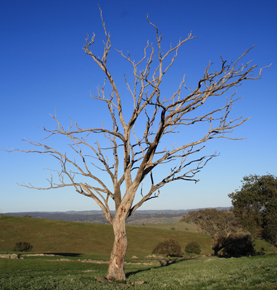 Once was a Shade Tree, once was a Forest
Now a dead reminder of self-righteous colonial exploitation
(Photo: Kate Sherren) Once was a Shade Tree, once was a Forest
Now a dead reminder of self-righteous colonial exploitation
(Photo: Kate Sherren)
.
References:.
.
- Cremer, K.W (1990) Trees for rural Australia. Inkata Press, Melbourne.
- DNRE (1990) Wildlife needs natural tree hollows. Land For Wildlife Note No. 6 Department of Natural Resources and Environment, Victoria.
- DNRE (1992) Old Trees for Wildlife. Land for Wildlife Note No. 18. Department of Natural Resources and Environment, Victoria.
- Nadolny, C. et al. (1997) A farmers guide to trees and bushland. North West Catchment Management Committee, Tamworth.
- Reid, N. (1996) Managing mistletoe. North West Catchment Management Committee, Tamworth.
- Wakefield, S. & Goldney, D. (1996) Assessing scattered farm trees, in Save The Bush Toolkit Charles Sturt University, Bathurst.
- Wakefield, S. & Goldney, D. (1996) Managing scattered farm trees, in Save the bush toolkit. Charles Sturt University, Bathurst.
.
Friday, January 13th, 2012

Unless there’s economic growth, we’re not making progress
Unless the trucks rumble along the roads, we’re not making progress
Unless the engines of industry are turning, we’re not making progress
Unless the factories and mills belch out smoke, we’re not making progress
Unless our armies are on the move, we’re not making progress
.
In truth, until we respect the planet, we won’t progress.
.
Thursday, January 12th, 2012
[This article was initially published by Tigerquoll on CanDoBetter.net on 20090703 under the title ‘Victorian Bushfires: CFA ill-prepared and reliant on obsolete firefighting technologies‘].
 The charred shell of a $350,000 CFA fire-tanker near Belgrave Heights, Dandenongs
Victoria in the aftermath of the 2009 Victorian Bushfires
(Photo: Craig Abraham, The Age, 20090225) The charred shell of a $350,000 CFA fire-tanker near Belgrave Heights, Dandenongs
Victoria in the aftermath of the 2009 Victorian Bushfires
(Photo: Craig Abraham, The Age, 20090225)
.
The above fire tanker was fortunately able to protect three firefighters from an out-of-control bushfire as it burnt over them.
But in 1998, a burn-over incident during a bushfire at Linton, near Ballaarat, tragically killing five CFA volunteers.

A report by ABC journalist, Jane Cowan, 20090701, ‘Bushfire lawyers blast CFA’s Rees‘ states that lawyers assisting Victorian State Premier John Brumby’s Royal Commission into the 2009 Victorian Bushfires have in an interim report concluded that the Victorian Country Fire Authority (CFA) was ill-prepared for what has been labelled by the media as ‘Black Saturday‘ (7th February 2009).
The lawyers have criticised CFA chief fire officer, Russell Rees, as having been “divorced from fundamental aspects of the responsibilities” as chief officer, including the provision of public warnings and the protection of life and assert that Mr Rees “should have made himself aware of predictions forecasting the path of the fires.”
Criticism has also been made about the reliance by the CFA on obsolete fire fighting technologies. Bushfire consultant assisting the Commission, Tony Cutcliffe, has stated “We still have people running these organisations who are predominantly devoted to a firefighting technology that is no longer in vogue let alone being attuned to the needs of behavioural management and leadership.”
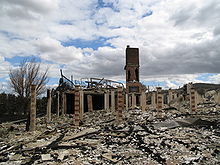
What is most disturbing of all is that hereon the CFA looks to continue business as usual.
The CFA says it has full confidence in Mr Rees and expects him to be at the helm again this summer. Mr Cutcliffe has expressed his concerns that:
.
‘Whatever changes are made, as it stands now the same management team that presided over the system which failed to cope on Black Saturday will be required to implement the new regime. If the calamity of what happened to Victoria last summer won’t force an overhaul of firefighting in Australia, what will?
.
The CFA’s old-school firefighting culture dies hard:
- The CFA remains an emergency response organisation almost totally dependent on a disparate weekend volunteer base (not the fault of the volunteers who are effectively unpaid public servants);
- The CFA’s bushfire notification system is wholly reliant on public calls to 000;
- The CFA’s fire fighting response system is centred around urban fire trucks that cannot access remote ignitions and so must wait until accessible from a roadside, when the fire is by then often out of control.
.
Taking fire trucks into the bush to fight fires is deadly as the above photo shows;
- The CFA remains a public authority with carte blanche to allow and deliberately cause immense irreversible damage to Victoria’s remaining ecolgical habitat, yet with no ecological expertise in its management or ranks;
- The CFA is grossly underfunded by state and federal governments.
Some questions:
- Given that unprecedented extreme weather was forecast and known to the CFA, what commensurate planning, preparation and response did the CFA deploy and when?
- What improvements in fire fighting practices have been implemented by the CFA since the 1983 Ash Wednesday fires to avoid a repeat?
- Where are the statistics showing the fire fighting performance in respect to each reported ignition, namely:
- Elapsed time from estimated ignition time to detection time (CFA becoming aware of ignition)?
- Elapsed time from detection time and on site response time (CFA arriving at the fire site/front with fire fighting equipment)?
- Elapsed time from response time to suppression time (fire extinguished by CFA)?
These are the three core fire fighting performance metrics.
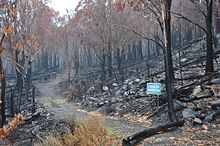
The 2009 Victorian Bushfire Royal Commission is following its terms of reference in assessing the specific facts and specific causes of the fires and logically as expected is starting to lay blame.
What’s the bet many findings are similar to those of previous bushfire investigations?
If the Royal Commission finds that the current system and structure of Victoria’s (read ‘Australia’s’) volunteer firefighting organisation was at fault, then this is a constructive outcome.
Only at such a legal level will change be forced on the system and culture. Previous internal debrief meetings and investigations (e.g. the 2003 Esplin Enquiry) have managed to have lessons from bushfire disasters ignored and fire fighting practices remain relatively unchanged.
If fire fighting is becoming more effective then how can such tragedies be continuing and growing in scale? How much more 20-20 hindsight is needed by the so-called ‘experienced’ fire fighting leadership before we can observe tangible improvements in fire fighting performance?
It’s all same old same old.
Given the dire inadequacies of this organisation, the culture has forced to become one of absolute defeatism – the only way it believes it can deal with bushfires is to slash and burn as much of the natural burnable landscape as possible, so that there is nothing left to burn. It’s as crackbrained as backburning through Belgrave Heights in order to save Belgrave.
Change cannot be brought to the CFA within the CFA. Change must come from Brumby and Rudd.
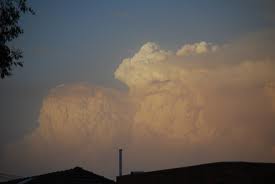 . .
(Ed: While Victorian Premier John Brumby has since been dismissed by election, PM Kevin Rudd currently remains as Australia’s Labor Foreign Minister. But Rudd has been discredited by this tragedy due to the grossly substandard emergency response, recovery, rebuilding and lack of proper emergency investment. His tangible disregard for victims deserves him to be sacked. Rudd has set the foundation for bushfire emergency history to repeat itself, all the while those who suffered still suffer; all the while Australia’s native wildlife are pushed by human ecological abuse and negligence closer to extinction, yet in absence of government care and funding. Australia’s Liberal-Labor governments remain immoral ecological extinctionists, comparable in ecological terms to the Cambodian Khmer Rouge).
.
Wednesday, January 11th, 2012
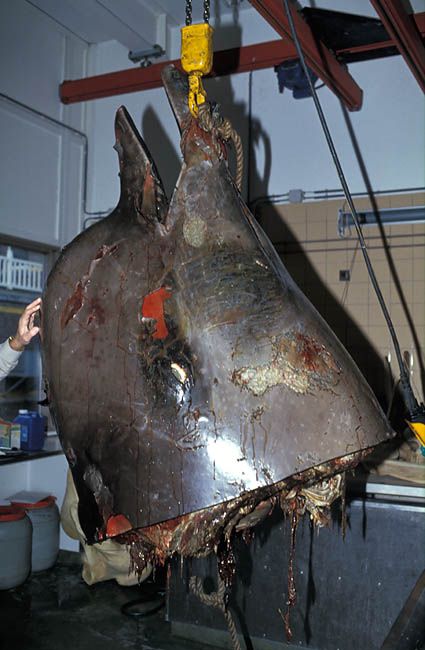 The Japanese kill bottlenose whales
(Photo: Save the Whales) The Japanese kill bottlenose whales
(Photo: Save the Whales)
.
If there is one redeeming legacy about previous British Tory Prime Minister Margaret Thatcher, despite the recurring criticism of her policies and leadership style by many Leftists, is that she was a political leader of strong convictions who commanded respect from foreign powers at a time when it was critical for Great Britain to stand by its principles.
Thatcher defended British sovereignty – its land, its people, its currency.
Not so Australia’s Labor-apparatchik installed puppet Prime Minister, Julia Gillard, who in pursuit of Rudd populism guided not by internal principle but by factions and focus groups is our chair warming PM of unprincipled mediocrity. Since her education revolution as Education Minister her costly results have been mediocre. Where are her principles? – ‘there will be no carbon tax under a government I lead‘, her extravagant $47 billion NBN without any cost-benefit study, her Malaysian solution for asylum seekers, her selling uranium to India against Labor principles and her appeasing foreign interests at Australia’s expense – US pharmaceutical and military interests, China’s mining and manufacturing interests, India’s nuclear interests and free trade with Indonesia, Malaysia and now Mexico and South American nations.
Clearly Ruddism drives Gillard foreign policy. All Gillard need do is fly in, deliver the speech and smile for the cameras, with Rudd up the back somewhere gesturing. Gillard abandoned Australia’s free speech defender Julian Assange and sided with the US Military. Japanese pirate whalers invade Australia’s Southern Ocean whale sanctuary to poach minke whales, endangered fin whales and threatened humpbacks. They now formal Japanese military support having brought their own guardian warship. Gillard doesn’t know what to do. She has a policy vacuum when it comes to the Environment, just like Labor siblings Garrett, Wong and Burke.
Rudd failed to honour his 2007 pledge to formally challenge Japanese whaling in the International Court of Justice. Only public outcry forced the Gillard Government to lodge its case with the court in May 2010. All Gillard does this time around with non-violent action group Forest Rescue boarding the Japanese whaling vessel Shonan Maru is to think legal and appeasing the pirate Japanese. Gillard has slammed the actions of three anti-whaling protesters as “unacceptable” and warned that others who carry out similar protests will be “charged and convicted”. However, the government should be preventing crimes in our near oceans, and illegal whaling, not condemning the actions of law-enforcers trying to do what they should be doing!
Gillard is gutless. Whaling is a sport. It is not scientific. It is not a primary industry because there is stuff all market for whale meat and the only way it is sold is because the Japanese Government subsidises the cost. Whaling is a cultural sport only and a backward cultural one at that. It is all about game.
The Japanese are traditionally a patriarchal society. Japanese males violating Australian waters for foreign whales for sport is consistent with Japanese male cultural history of violating foreign women they euphemistically called ‘comfort women’. Such Japanese culture is backward and foreign and has no place in Australian waters and the Australia Whale Sanctuaries that Australia is custodian for.
Japan‘s dogged pursuit of whales well beyond its shores in our Southern Ocean is more about preserving endangered cultural pride than science.
Japan‘s justifications for whaling are not commercial nor scientific, despite the official rhetoric. They are culturally deep and desperately self-preserving, despite being wrong, wasteful and backward. The scientific con is only to prevent flagrant breach of the Antarctic Treaty, to which Japan is a signatory.
Japan‘s arrogance is repeated with its refusal to respond with an apology to the request by acting Queensland Premier Lucas over Japan’s confirmed sinking of Australia’s hospital ship the Centaur in WWII. Australian’s should never forget that Japan is the only nation ever to directly threaten Australia’s sovereignty. Three generations later Japan again defies Australian sovereignty.
Gillards’ pre-election promise of getting tough on whaling (or was that Rudd’s?) was an election promise; that’s it.
.
One of the famous quotes from ‘Iron Lady’ Thatcher was “I seem to smell the stench of appeasement in the air.“
Gillard’s appeasement of Japanese whaling is the stench of her followship. Gillard is gutless. Gillard has no trait as a leader, let alone a principled leader of our nation.
Gillard has no regard for Australian sovereignty. Like her predecessor Rudd, who continues to advise on all things foreign to Australia, Gillard’s raison d’être is to comply as a puppet, enjoy her time in the sun until the next apparatchik push.
Like Rudd, Gillard treats Australian values as second rate, as if a foreigner with cultural disrespect.
Rudd reneged on his 2007 election promise to send an Australian ship to monitor Japan’s annual slaughter of 1000 minke, humpback and fin whales.
Rudd reneged on his pre-election undertaking to exercise Australia’s right to take Japan to the International Court of Justice over its whale hunting expeditions in the Southern Ocean.
Rudd’s turned his back on Japan’s harpoon whaling in Australian Antarctic waters and let Japan pirate whalers refuel in Australia.
Japan flagrantly ignores Australia’s whale sanctuary and Australia’s sovereignty. Japan condones an unprofitable, low demand and antiquainted 19th Century practice of whale harpooning, then tells international lies justifying some scientific spin that only discredits Japan’s reputation.
Japan’s Nippon Paper has been slaughtering Australian native forests for its immoral woodchip paper trade out of its habitat dead camp at its Twofold Bay mill at Eden.
How would the Japanese people like it if Gunns wanted to woodchip their sacred Aokigahara forest around the base of Mount Fuji?
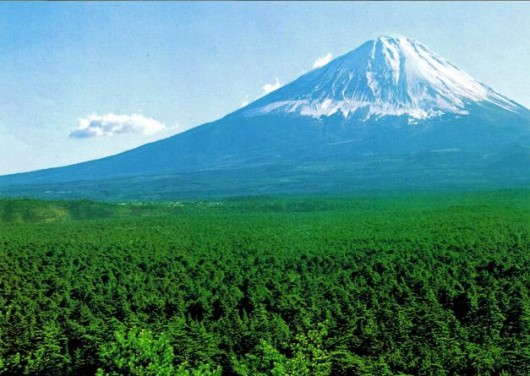 Aokigahara forest, below Mount Fuji Aokigahara forest, below Mount Fuji
.
Tags: Antarctic Treaty, Aokigahara Forest, Australia's sovereignty, Australian Government, Centaur, Gutless Gillard, International Court of Justice, Japan, Japanese whale poaching, Julia Gillard, Malaysian solution for asylum seekers, Margaret Thatcher, selling uranium to India, there will be no carbon tax under a government I lead
Posted in Antarctica (AU), Threats from Poaching and Poisoning, Threats from Weak Environmental Laws, Whales | No Comments »
Add this post to Del.icio.us - Digg
Tuesday, January 10th, 2012
[This article was first published by Tigerquoll on CanDoBetter.net on 20100416 under the same title].
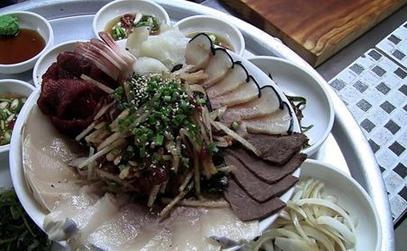 . .
Japanese contempt for whales, dolphins and sharks has highlihghted to the world the backward culture of this part of traditional Japanese society. Japanese whalers and fishing corporations have made Japan the pariah of the world’s oceans.
The Japanese lie of scientific whaling has become a cliched euphemism. Now the science has been officially confirmed as a fraud, as if we didn’t already know.
.
The following article has just been published in the online Science Daily:
.
‘DNA analysis suggests whale meat from sushi restaurants in L.A. and Seoul originated from Japan’
[Source: ScienceDaily (Apr. 14, 2010]
.
“An international team of Oregon State University scientists, documentary filmmakers and environmental advocates has uncovered an apparent illegal trade in whalemeat, linking whales killed in Japan’s controversial scientific whaling program to sushi restaurants in Seoul, South Korea, and Los Angeles, Calif.
Genetic analysis of sashimi served at a prominent Los Angeles sushi restaurant in October of 2009 has confirmed that the strips of raw meat purchased by filmmakers of the Oscar-winning documentary, “The Cove,” came from a sei whale — most likely from Japanese “scientific whaling.”
Do you want dolphin with that? ‘Scientists have identified four species of whales and one species of dolphin from a plate of sashimi, like this one sold in a restaurant in Seoul. (Credit: Photo courtesy of Louie Psihoyos, Oceanic Preservation Society)’
“The sequences were identical to sei whale products that had previously been purchased in Japan in 2007 and 2008, which means they not only came from the same area of the ocean — but possibly from the same distinct population,” said Scott Baker, associate director of the Marine Mammal Institute at Oregon State University, who conducted the analysis.
“And since the international moratorium on commercial hunting (1986), there has been no other known source of sei whales available commercially other than in Japan,” Baker added. “This underscores the very real problem of the illegal international trade of whalemeat products.”
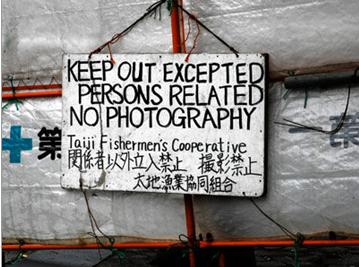
Results of the study were published in the Royal Society journal Biology Letters. “The Cove” director Louie Psihoyos and assistant director Charles Hambleton gained the attention of international news media recently by covertly filming the serving of whale products at The Hump restaurant.
Following initial identification of the samples taken from the restaurant, the products were turned over to the National Oceanic and Atmospheric Administration’s law enforcement division and in March, federal prosecutors filed a criminal complaint against the restaurant, which since has closed. Baker said the samples taken from The Hump cannot conclusively be linked to an individual whale because genetic identity records of animals killed through Japan’s scientific whaling are not released by the Japanese government. In their paper in Biology Letters, Baker and 10 co-authors — including “The Cove” filmmakers — call for Japan to share its DNA register of whales taken from that country’s scientific whaling program and “bycatch” whaling.
“Our ability to use genetics as a tool to monitor whale populations around the world has advanced significantly over the past few years,” Baker said, “but unless we have access to all of the data — including those whales killed under Japan’s scientific whaling — we cannot provide resource managers with the best possible science.
“This is not just about better control of whaling itself,” Baker added, “but getting a better handle on the international trade of whale products.”
In their paper published in Biology Letters, lead author Baker and colleagues from the Korean Federation of Environmental Movements also report on 13 whale products purchased at a sushi restaurant in Seoul, South Korea, during two 2009 visits. The sushi was part of a mixed plate of “whale sashimi,” and genetic testing by Baker and OSU’s Debbie Steel determined that four of the products were from an Antarctic minke whale, four were from a sei whale, three were from a North Pacific minke whale, one was from a fin whale, and one was from a Risso’s dolphin.

Further testing by collaborators from Seoul National University confirmed the individual identity of the whale products by DNA “profiling.” The DNA profile of the fin whale meat from the Seoul restaurant genetically matched products purchased by Baker’s colleague, Naoko Funahashi, in Japanese markets in 2007 — strongly suggesting it came from the same whale.
“Since the international moratorium, it has been assumed that there is no international trade in whale products,” Baker said. “But when products from the same whale are sold in Japan in 2007 and in Korea in 2009, it suggests that international trade, though illegal, is still an issue. Likewise, the Antarctic minke whale is not found in Korean waters, but it is hunted by Japan’s controversial scientific whaling program in the Antarctic.
“How did it show up in a restaurant in Seoul?”
Baker has developed an international reputation for his research in determining the origin of whalemeat products sold in markets around the world. His research on identification of dolphin meat contaminated with high levels of mercury was featured in “The Cove,” where he worked with Psihoyos and Hambleton. In their paper, the authors describe the long legacy of falsifying whale catch records, beginning with the Soviet Union, which failed to account for more than 100,000 whales it killed in the 20th century. This illegal, unreported or unregulated whaling “continues today under the cover of incidental fisheries bycatch and scientific whaling.”
.
Japanese love slaughtering dolphins too!
.
Each year at a cove near Taiji on the south east cost of central Japan, thousands of bottlenose dolphins and pilot whales are slaughtered by the Japanese. The cull is endorsed by the Japanese goivernment to commence on 1st September every year.
Bottlenose Dolphin, confimed as one of the most intelligent animals on the planet Typically, over six months the town’s fishermen will catch over 2,000 of Japan’s annual quota of 20,000
dolphins. Dolphin slaughter turns sea red as Japan hunting season returns “In a typical hunt the fishermen pursue pods of dolphins across open seas, banging metal poles together beneath the water to confuse their hypersensitive sonar. The exhausted animals are driven into a large cove sealed off by nets to stop them escaping and dragged backwards into secluded inlets the following morning to be butchered with knives and spears. They are then loaded on to boats and taken to the quayside to be cut up in a warehouse, the fishermen’s work hidden from the outside by heavy shutters.
‘Tensions have been rising and the culls conducted in near-secrecy since 2003, when two members of the marine conservation group Sea Shepherd released several dolphins that were being kept in an enclosure ready to be slaughtered.
During our visit we were followed at almost every turn, ordered not to take photographs and questioned by the police, who seem to view every foreign visitor as a potential hunt saboteur. None of the residents who agreed to talk would reveal their names, and requests for comments from the town office were ignored. Criticism of the dolphin hunts intensified this summer with the release of the award-winning US documentary The Cove, whose makers used remote-controlled helicopters and hidden underwater cameras to record the hunters at work. The film was released in the UK last October.
The film, with its graphic footage of the dolphin slaughter, sparked outrage after its release in the US and Australia. Last month councillors in the Australian coastal town of Broome suspended its 28-year sister-city relationship with Taiji after receiving thousands of emails protesting at the culls.
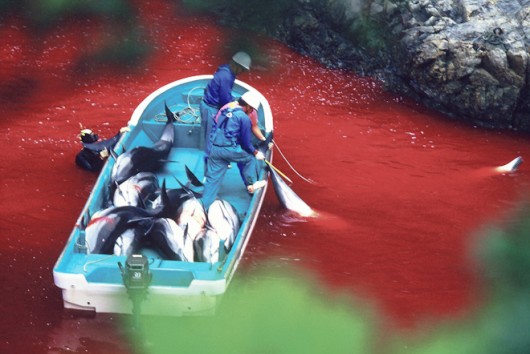 Japanese annual dolphin slaughter at The Cove, Taiji, Japan Japanese annual dolphin slaughter at The Cove, Taiji, Japan
.
Taiji is regarded as the spiritual home of Japan’s whaling industry. The first hunts took place in the early 1600s, according to the town’s whaling museum, but the industry went into decline after the introduction of a global ban on commercial whaling in 1986. The town, a six-hour train ride from Tokyo, is dotted with restaurants serving whale and dolphin sashimi and cetacean iconography appears on everything from the pavements and bridge balustrades to road tunnels and a wind turbine.”
[Source: ‘Dolphin slaughter turns sea red as Japan hunting season returns’, by Justin McCurry, The Guardian, 14-Sep-09, ^http://www.guardian.co.uk/world/2009/sep/14/dolphin-slaughter-hunting-japan-taiji].
..
Call to boycott Japanese restaurants
.
This slaughter of whales, dolphins and endangered fish such as Bluefin and sharks confirms the barbaric backwardness of traditional cultures in east Asia. Japan clearly is making a point to highlight its backwardness.
Around the world, including in Australia, Japanese restaurants continue to serve up Bluefin Tuna and Shark Fin soup and probably ‘scientific’ whale meat and dolphin. It is a disgrace!
Bluefin is critically endangered and both the scalloped hammerhead shark and whitetip shark “have seen their numbers drop dramatically since the 1980s, due to rising demand for shark fin soup especially among China’s nouveau rich and for fish and chips in Europe. Surging demand for shark fin soup among Asia’s booming middle classes is driving many species of these big fish to the brink of extinction.”
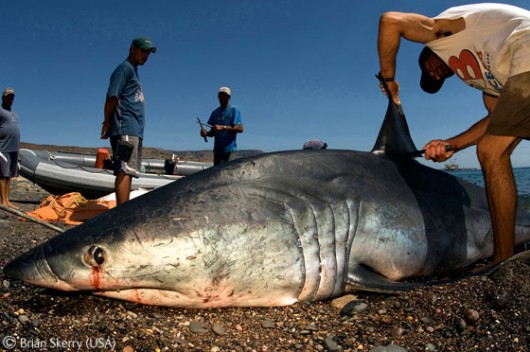
[Source: ‘Sharks threatened by Asian consumers, says Group’ Michael Casey, AP, 16 March 2010, ^http://www.physorg.com/news187936927.html]
.
In this March 8, 2010 photo, a woman walks past shark fins displayed in a glass case at a dried seafood shop in Hong Kong.
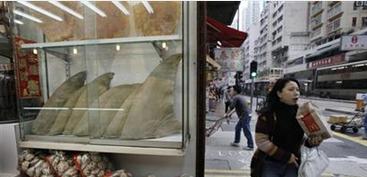 Shark Fins for sale in Hoing Kong
^http://www.physorg.com/news187936927.html Shark Fins for sale in Hoing Kong
^http://www.physorg.com/news187936927.html
.
The following example Japanese restaurants in Australia sell Bluefin and shark fin. It is time Australians boycotted such trades perpetuating wildlife extinctions.
* SYDNEY: Blue Fin Seafood Restaurant, Brighton-Le-Sands Amateur Fishermans Club, Bestic St, Brighton-Le-Sands NSW 2216
* MELBOURNE: Blue Fin, 342 Brunswick St, Fitzroy VIC 3065
* BRISBANE: Oishii Sushi Bar Shop2/70 Pinelands Rd Sunnybank Hills, Brisbane
Don’t buy Japanese – it only perpetuate’s Japan’s arrogance
.
Back in 2000, Australia and New Zealand sought an international ruling at the International Court of Justice under United Nations Convention on the Law of the Sea (UNCLOS) against Japan’s fishing of Southern Bluefin Tuna in the Southern Ocean.
Ridiculously, the court found that it had no jurisdiction to make binding rulings on Japan’s access to high seas fisheries, and that Japan can make “its own unilateral decisions as to what to fish, and where.”
So Japan continued to unilaterally embarke on a three year “Experimental Fishing Program” (EFP), that…is we want the tuna and no-one is getting in our way!
Last month at CITES COP15 meeting, Monaco had called for a global ban on bluefin tuna fishing by CITES, arguing despite stocks having fallen by about 85%, the organisation responsible for managing the bluefin fishery – the International Commission for the Conservation of Atlantic Tunas (ICCAT) – had not implemented measures strict enough to ensure the species’ survival. Australia voted against the ban, supporting Japan. ICCAT is due to meet on the bluefin issue on 14 June 2010 in Madrid Spain.
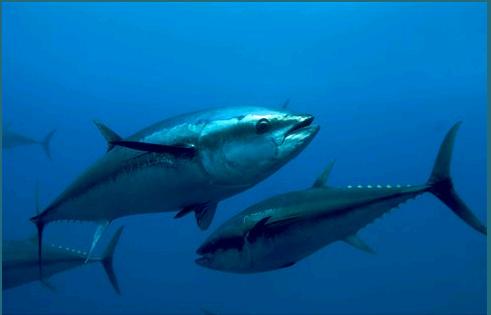
Meanwhile, in the Southern Ocean, the Commission for the Conservation of Southern Bluefin Tuna is a voluntary fishery management group comprised of Australia, Japan, New Zealand, South Korea and the Philippines as a formal cooperating non-member. Much of the Southern Bluefin Tuna catch ends up in Japan where it is prized as sushi and sushimi.
Australia’s tuna fishing industry is based in Port Lincoln in South Australia. Japanese, Korean, Indonesian and Taiwanese Bluefin tuna fleets use long line fishing which results in the incidental deaths of thousands of seabirds, particularly petrels and albatross.
For over 20 years Japan has plundered the Southern Bluefin Tuna Fishery under its unilaterally imposed ‘Experimental Fishing Program (EFP)’, similar in deception as ‘Japanese scientific whaling’. According to Humane Society International, the Scientific Committee to the Commission has estimated the SBT population is at a mere 3-8% of its pre-exploitation biomass.
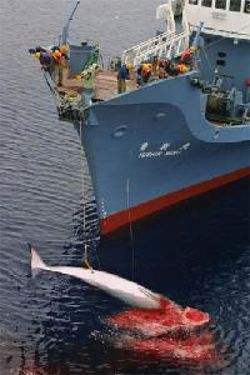
.
It is time to boycott Japanese sushi, sushimi, seafood restaurants and indeed all Japanese products, until Japan’s arrogant poaching of protected and endangered marine life is stopped!
.
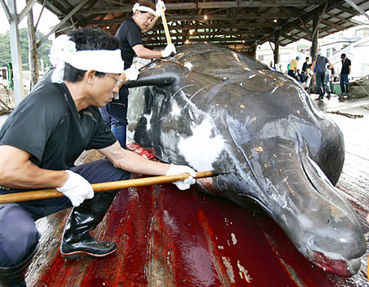 Japanese carving up Minke Whale Japanese carving up Minke Whale
.
.
Tags: backward cultures, Blue Fin Restaurant, bluefin tuna, damn lies, dolphins, Japanese whale research, sashimi, scientific whaling, shark conservation, shark fin, Taiji, The Cove, whales
Posted in Dolphins, Marine Wildlife, Threats from Poaching and Poisoning, Whales | No Comments »
Add this post to Del.icio.us - Digg
Monday, January 9th, 2012
This article was initially published on CanDoBetter.net 20090717 by Tigerquoll under the title ‘Victorian Bushfires – cost effectiveness of aerial fire-fighting [Bushfire CRC Ltd]’
.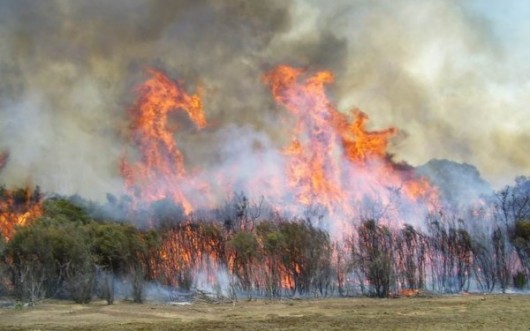 . .
In April 2009, Australia’s leading bushfire research organisation, Bushfire CRC Ltd, published another important report ‘THE COST-EFFECTIVENESS OF AERIAL FIRE-FIGHTING IN AUSTRALIA‘ by Gaminda Ganewatta & John Handmer, via the Centre for Risk and Community Safety, RMIT University in Melbourne.
The report has examined the cost effectiveness of aerial fire suppression in Australia and has made the following important and most relevant findings, which cannot be ignored by fire authorities and their politically disposed masters:
- The use of ground resources with initial aerial support is the most economically efficient approach to fire suppression!
- Aircraft are economically efficient where they are able to reach and knock down a fire well before the ground crew arrives!
- Rapid deployment of aerial suppression resources is important, especially in remote or otherwise inaccessible terrain!
- The sole use of aircraft is economically justified in the event of other suppression methods being unable to reach the fire event quickly!
- Critical factors are speed of deployment and turnaround time!
- Aircraft save more damage than they cost to operate, noting that high volume helicopters and fixed wing aircraft are economically more efficient in fire suppression, compared to small helicopters and large air tankers. Air tankers are less maneuverable compared to helicopters, thus their use in initial attack is not practical, unless used solely for large events!
.
So while Brumby’s Royal Commission ( Victorian Bushfires 2009) is working towards finalising its investigation into the Victorian Bushfires, this presents an opportunity for Fire Management to harness such relevant bushfire research.
Before next bushfire risk season key relevant bushfire research like this can be evaluated and the costs, budgets and business cases formulated to propose application to fire management operations.
But frankly can one lead a politicised brumby to water?
The following references provide useful illustrations and real life accounts of practical aerial fire fighting resource options out there (print them off and have a darn good read):
‘Helicopters: Stopping the Blazes‘ by Amanda N. Gustafson (2008) [Read publication]
[Source: ^http://www.rotormagazine.org/portals/24/pdf/winter2007_8/p64.pdf]
.
Tigerquoll
[Licensed Commercial Helicopter Pilot]
.
Sunday, January 8th, 2012
[This article was first published on CanDoBetter.net 20091025 by Tigerquoll under the title ‘Southern Hairy Nosed Wombat – “destruction permits” issued in Sth Aust.’ It was sourced from the ABC ^http://www.abc.net.au/news/stories/2009/10/01/2701495.htm?site=news]
.
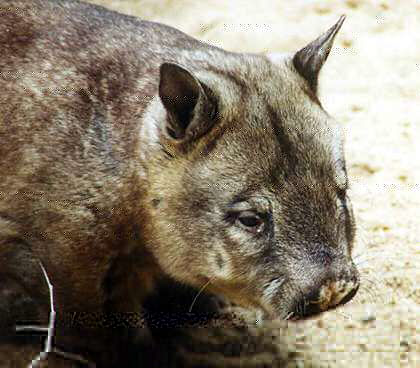 Southern Hairy Nosed Wombat (Lasiorhinus latifrons) Southern Hairy Nosed Wombat (Lasiorhinus latifrons)
.
2009:
“Farmers are illegally slaughtering thousands of wombats in South Australia, a nature group says. Brigitte Stevens from the Wombat Awareness Organisation says burrows of southern hairy-nosed wombats are being bulldozed or blown up on Yorke and Eyre Peninsulas and in the Murraylands.
She says farmers can get permits to destroy a few wombats, but that it not a licence to wipe out the entire population.
“There’s not enough or not good enough regulations on what actually happens to the wombat if those numbers are being killed,” she said. “Now I know it’s difficult because I know you need a lot of staff to be able to do that. But it’s really hard for us when we’re trying to stop people killing them illegally – if it’s allowed by the government through permits, how are we going to stop it?”
Ms Stevens wants the Department for Environment and Heritage (DEH) to act on evidence the group has gathered.
“We’ve also got evidence, photographic, and also I’ve kept all my correspondence with DEH, the RSPCA about places that we’ve reported that have ended up having destruction permits, but we’ve got evidence the animals are being buried alive, the entire population is being killed on that particular property,” she said.
Department for Environment and Heritage chief executive, Allan Holmes, says it will act when enough evidence is provided. “You need to know where it’s occurred, when it occurred, it’s about providing evidence that will stand up in a court of law,” he said. “Again the issue for me is at the moment these claims are largely unsubstantiated. “If the evidence is provided we will investigate them.”
Mr Holmes says mass killings with petrol bombs or bulldozing will not be tolerated.
“The only way that you can legally destroy a wombat is by shooting with a particular calibre rifle,” he said. “And, as I said, given the evidence we will prosecute with the full force of the law.”
.
2011: ‘Hairy-nosed wombats feel farmers’ wrath‘
[Source: ‘Hairy-nosed wombats feel farmers’ wrath’ , 20110420, ^http://www.cfzaustralia.com/2011/04/hairy-nosed-wombats-feel-farmers-wrath.html]
.
They’ve always been uneasy bedfellows, but now Hairy-Nosed Wombats – a rare and protected marsupial – are being slaughtered in large numbers by South Australian farmers as their numbers boom thanks to abundant rain and plenty of food.
.
Nearly 900 southern hairy-nosed wombats have been shot with South Australian Government sanction since 2006, and there are claims that many more have been slaughtered illegally.
.
The Government also has rules which state that any young wombats found in the pouch of a shot wombat should be killed by decapitation, as this achieves “a sudden and painless death”.
Sickeningly, Parliament has been told that apart from the official deaths, hundreds more wombats are being killed illegally by landholders across the state.
As well as being the state’s animal emblem, the wombat is classed as a vulnerable species, but farmers claim its burrows destroy their land and damage farm machinery.
Like badgers in the United Kingdom, wombats are much maligned by the farming community and are seen as a menace, copping the blame for everything from soil erosion and breaking the legs of cattle (from falling into wombat burrows) to spreading disease.
Official figures show that between January 1, 2006, and December 22 last year, 139 permits were issued for destruction of South Australian wombats.
.
Hairy-nosed Wombats?
The much rarer southern hairy-nosed wombat has larger ears than the common wombat, and its snout is coated with fine hairs, whereas the northern hairy-nosed wombat is presumed extinct in NSW.
The southern hairy-nosed wombat prefers dry, open country bu have become very rare, and until recently were thought to be extinct in NSW. They are currently listed as endangered.
A wombat can reproduce after it reaches two years of age. Mating occurs between September and December, and usually results in one offspring. The newborn wombat, which weighs only 1 g and is less than 3 cm long, has to crawl from the birth canal into the mother’s pouch. This pouch faces backwards, which stops dirt and twigs getting caught in it when the mother digs. The young wombat will stay in the pouch for between seven and 10 months.
Because of settlement and agriculture, wombats in most areas have been pushed into the rugged hills and mountains. As long as they remain in these areas, wild dogs and collisions with cars are more of a threat to these marsupials than landowners. However, because of their habit of wandering down to the flats to enjoy the tasty morsels growing there (knocking down fences on the way), they are sometimes killed by farmers.
.
[Source: ^ http://www.nationalparks.nsw.gov.au/npws.nsf/Content/Wombats]
.
‘Wombat Awareness Organisation‘
‘The Wombat Awareness Organisation (WAO) is a non-profit organisation specialising in large scale rescue, rehabilitation and conservation of the Southern Hairy Nosed Wombat (Lasiorhinus latifrons).
The Wombat Awareness Organisation is playing an instrumental role in preventing unneccessary suffering of the wild population of Southern Hairy Nosed Wombats in hope to conserve this incredible little Aussie for future generations.
When WAO established itself in the Murraylands of South Australia in 2007 we were overwhelmed at the lack of services and protective rights offered to SA’s faunal emblem. Battling the effects of drought and global warming, Sarcoptic mange, habitat destruction, vehicular accidents and culling both legal and illegal it was obvious that this species was in trouble. Getting back to basics and finding simple, productive alternatives of drought relief, mange management and coexistence strategies have become the main focus of the organisation by aiming to protect these beautiful wombats from suffering and minimise the need for them to come into care.’
.
Read More: ^http://www.wombatawareness.com/
.
‘Going Khaki’:
Government wildlife protection has long been a joke and so much so that ‘Government wildlife protection‘ has become an oxymoron. Community frustration is obviously a boiling point at learning about an endangered wildlife species being poached by selfish farmers for their own ends.
If there were a fund for taking out poachers of wildlife I would gladly donate to it.
If it were legal to shoot wildlife poachers I would be amongst the first to enlist. It is legal to shoot wildlife poachers in parts of Africa where it is needed…
.
‘Among Africa’s Eco-Mercenaries’
[Source: ‘Among Africa’s Eco-Mercenaries’, by Nicole Davis, National Geographic, 200210, ^ http://www.nationalgeographic.com/adventure/0210/life.html]
.
‘They’re trained to kill, with orders to shoot on sight. Could they be the saviors of Africa’s wildlife?
Writer Tom Clynes went deep into the Central African Republic to find out. Here he reveals the stories behind his new article, “They Shoot Poachers, Don’t They?”
This year Wyoming conservationists took their battle overseas into the savanna of the Central African Republic. With the permission of President Ange-Félix Patassé to shoot on sight, the group is raising a militia to patrol the eastern third of the African country for poachers.
Writer Tom Clynes spent nearly a month with the hired guns in this latest effort to stop the bush-meat trade, perhaps the pre-eminent threat to African wildlife today. The assignment was as complicated as it was fascinating.
“The good stories begin with intriguing questions. And in this case the questions were complicated and quite epic. You had a bunch of Americans who had basically convinced a leader of a Third World country to let them raise an army and take over a third of the country with shoot-on-sight authority,” says Clynes. “I had a good idea how I felt about this kind of thing: Killing is wrong—end of argument.”
.
‘They Shoot Poachers, Don’t They?‘
[Source: ‘‘They Shoot Poachers, Don’t They?”, by Tom Clynes, National Geographic, 200210, ^http://www.nationalgeographic.com/adventure/0210/story.html#story_1]
.
In the heart of central Africa, marauding bands of bush-meat hunters are terrorizing villages and slaughtering wildlife to the brink of extinction. Now a family practitioner from Wyoming has decided to recruit his own army to stop them.
The story, as I first heard it, had the zing of a Hollywood pitch: Led by a soft-spoken doctor, a band of American conservationists had persuaded the president of the Central African Republic to let them raise a militia and take over the eastern third of the Texas-size country. Their mission was to drive out the marauding gangs of Sudanese poachers who were rapidly wiping out the region’s elephants and other animals.
Their authority: ‘Shoot on sight’
No one had been killed yet when I arrived in Bangui in early March. Throughout the dilapidated capital, signs of a November coup attempt were still fresh: Bullet divots scored the bricks of the Tropicana Club, and a curfew remained in effect. A detachment of Libyan paratroopers hulked in front of the mansion of President Ange-Félix Patassé, who had been bailed out, again, by his friend Muammar Qaddafi.
Most of the fighting had taken place in the northern reaches of town, where the American group, Africa Rainforest and River Conservation (ARRC), had rented a gated compound. As I approached the large whitewashed porch, it struck me that ARRC was well prepared for another flare-up. Scattered among the wicker furniture were several men in fatigues, a couple of AK-47s, a grenade launcher, and a very excited chimpanzee.
Dave Bryant, a 49-year-old South African who had been hired in August to lead the militia, extended his hand. “Welcome to bloody paradise,” he said. He introduced a slight, 26-year-old Iowan named Michelle Wieland, who was in charge of ARRC’s community-development component, and a thin 35-year-old named Richard Hagen, who had flown up from South Africa to help with security.
“And the little fellow jumping up and down is Commando,” said Bryant. “We rescued him from a Sudanese trader, and to show his appreciation he’s been crapping all over our floors.”
Bryant’s face seemed custom-assembled for bad-ass impact. Beneath a clean-shaven scalp, a towering forehead descended into a deep ravine of a scowl line, bridged by wraparound sunglasses. An expansive Fu Manchu mustache arched around a loaded cigarette holder, which dangled expertly from one side of his mouth.
“I guess you’ve heard that we’re in a bit of a cock-up,” he said. “We’ve been stuck in this shit-hole for five months now, trying to get out into the bush to do a reccy [reconnaissance] before the rains hit. We’re waiting for gear, we’re waiting for money, and we’re waiting for vehicles. And we’re waiting for people in this zoo they call a government to do something other than put their bloody hands out.”
The three were eager to hear about my meeting that day with the American ambassador, Mattie Sharpless. Sharpless had recently arrived in Bangui, and I had asked her what she knew about ARRC.
“The rumor is that they’re hiring South African mercenaries and diverting funds into diamond ventures,” Sharpless had answered.
Wieland winced when I relayed the quote, but Bryant smiled and leaned back in his chair. “Yes, well. We South Africans don’t usually like to use the term ‘mercenary.’ We prefer to say ‘playing at soldiers on a privately employed basis.'”
.
Tags: animal cruelty, badgers, conservation, Don't They, Eco-Mercenaries, farmers, going khaki, Shoot poachers on sight, South Australia, southern hairy-nosed wombat, They Shoot Poachers, wildlife protection, wombat, Wombat Awareness Organisation
Posted in 21 Going Khaki!, Threats from Farming, Threats from Poaching and Poisoning, Wombats | No Comments »
Add this post to Del.icio.us - Digg
|
|
 Tasmania’s magnificent ‘Weld Forest’
~ one of Tasmania’s rare ancient forests constantly threatened
by Tasmanian Government recidivist logger ‘Forestry Tasmania’
Tasmania’s magnificent ‘Weld Forest’
~ one of Tasmania’s rare ancient forests constantly threatened
by Tasmanian Government recidivist logger ‘Forestry Tasmania’
 Tasmania’s Forest Defender – Miranda Gibson
stationed in a eco-Tree Sit 60 metres above the Styx Valley Forest floor
Visit: The ObserverTree.org
…waiting for Australia’s Prime Minister Julia Gillard to honour her personal promise to Tasmanians to protect Tasmanian old growth forests for perpetuity.
.
Tasmania’s Forest Defender – Miranda Gibson
stationed in a eco-Tree Sit 60 metres above the Styx Valley Forest floor
Visit: The ObserverTree.org
…waiting for Australia’s Prime Minister Julia Gillard to honour her personal promise to Tasmanians to protect Tasmanian old growth forests for perpetuity.
.
 Australia’s 27th Prime Minister, The Hon. Julia Gillard (June 2010 – ?)
In her vital and privileged position, she has the power, influence, connections and taxpayer resources
to protect Tasmania’s 572,000 hectares of old growth native forests consistent with the IGA.
As usual, it comes down to political will, courage and innovative thinking – which is what we expect of our leaders.
Australia’s 27th Prime Minister, The Hon. Julia Gillard (June 2010 – ?)
In her vital and privileged position, she has the power, influence, connections and taxpayer resources
to protect Tasmania’s 572,000 hectares of old growth native forests consistent with the IGA.
As usual, it comes down to political will, courage and innovative thinking – which is what we expect of our leaders.
 Logging invades Tasmania’s South-West wilderness in the Huon valley,
not far downstream of the above photo.
This logging is ruining the integrity of the adjacent Tasmanian Wilderness World Heritage Area
whose boundaries have been drawn to protect the treeless mountaintops
and leave the forested valleys to the loggers.
Logging invades Tasmania’s South-West wilderness in the Huon valley,
not far downstream of the above photo.
This logging is ruining the integrity of the adjacent Tasmanian Wilderness World Heritage Area
whose boundaries have been drawn to protect the treeless mountaintops
and leave the forested valleys to the loggers.
































